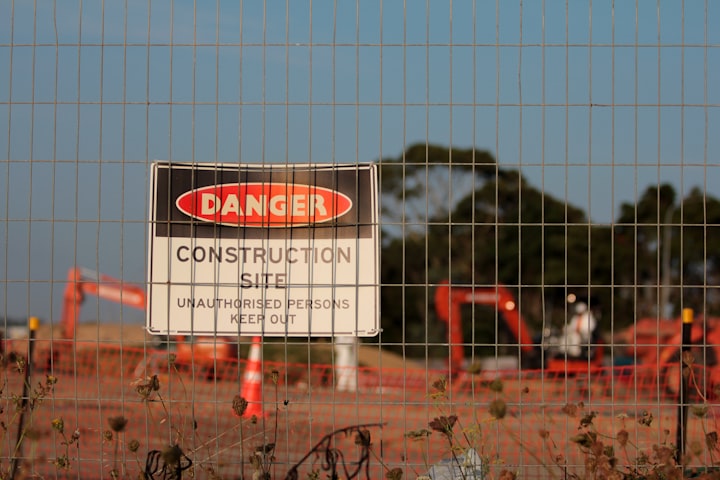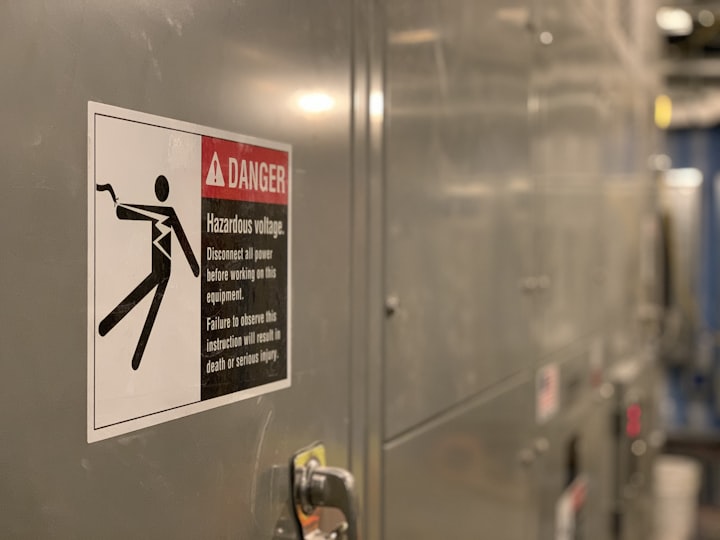How to prevent accidents in a workplace
Let us now look into ways that will prevent accidents and injuries at the workplace.

Most of us spend maximum time at our workplace only. Let it be an office with simple amenities or a corporate with sophisticated facilities or a manufacturing factory. Occupational safety and health have always been a major concern.
A work-related injury is mainly responsible for disability, loss of health, and death worldwide. Reports claim that from the year 2004, approximately 105 workers die annually due to work-related injuries. In the year 2020, 217,500 work-related injury claims were raised to Accident Compensation Corporation (ACC). The COVID-19 lockdown in 2020 had the lowest number of fatal claims.
Though we cannot eliminate workplace accidents, there are ways to prevent or reduce accidents from happening. Let us now look into ways that will prevent accidents and injuries at the workplace.
Keeping Workplace in Order
Well-maintained workplaces prevent trips, slips, and falls from occurring again and again. Simple cleaning procedures will help to prevent cuts, bruises, fractures, and dislocations of joints.
The workplace may be office cubicles in corporate offices or large sheds or halls in factories or warehouses. Paying attention to simple things like fixing computer cables or arranging tools neatly on the work table can prevent unexpected accidents and injuries.
A clean workplace improves productivity and boosts the morale of the workers. Working in a safe environment with safety measures in place will help to handle unexpected challenges of working with flammable materials, combustible dust, and other hazardous materials.
Remaining Alert Always
Not being alert at the workplace results in thousands of serious workplace injuries that cost the economy billions of dollars in healthcare and loss in productivity every year.
Staying alert prevents accidents in the workplace and keeps everyone safe. It can help to avoid grave injuries or acute illness or death that may lead to an abrupt loss of production or damage to the property.
Regular training sessions on safety measures will keep workers who work with hazardous materials on high alert. Rewarding employees who follow safety standard procedures and protect themselves from any types of workplace injuries will encourage other employees also to be alert.
Educating Employees on Workspace Safety

Conducting monthly meetings to discuss the importance of following standard procedures regarding health and safety hazards in factories and industries is a must.
Safety training supports workers with adequate knowledge and skills to perform their assigned duties safely and prevents accidents or injuries to them and their co-workers.
An effective workplace safety plan has guidelines/instructions that guide the workers to be alert, to identify hazards, to understand the need to report hazards immediately to their leaders, and finally know how to deal with workplace incidents effectively.
Research Safety Vulnerabilities
Every organisation must spend some quality time analysing safety vulnerabilities in the workplace. The safety vulnerabilities can be from environmental, social, physical, and economic factors.
Conduct periodic inspections of buildings and the workspace for any damage or loopholes that may turn into safety hazards. Regular evaluation of walkways, floors, tools, and equipment at the workplace is a must.
Check if your employees are working in unison or remain isolated during working hours. Check if the team has the confidence to meet deadlines with little stress or strain. Identify the strengths and weaknesses of the workplace and plan accordingly.
Providing Personal Protection Equipment & Training

Organisations must take care to provide a safe work environment for their employees. To prevent accidents and injuries because of chemical, electrical, radiological, mechanical, or physical hazards, workers must perform their assigned tasks with proper protective equipment.
Proper training will help employees to use their personal protection equipment every day at the workplace. The employees must know how to wear, take off their PPE, and also how to maintain and dispose of them after use.
Fixing Safety Signs

Installing workplace safety signs conveys information effectively about the potential hazards and dangers to avoid unexpected accidents and injuries. Danger signs, caution signs, and safety instruction signs are some types of safety signs.
Safety signs must be installed in places or spaces where they are more visible and noticed easily. Signs are installed to show directions, warn of potential dangers and share important information. Regular maintenance of safety signs ensures efficient functioning and safety of the workplace.
Regular Inspection & Maintenance of Company Vehicles

Preventive maintenance of company vehicles must happen regularly. Poor maintenance turns into significant hazards that may cause accidents and injuries.
Replacing faulty equipment is not time-consuming or more expensive. But, unexpected repairs and replacement of parts can be expensive.
Regular maintenance of company vehicles will help to identify signs of leaks or cracks or wear and tear because of friction. Regular maintenance will also extend the life of vehicles and reduce repair costs, replacement costs, and insurance costs.
Communicating with Your Supervisor on Risks

Employees must report a workplace accident immediately to the supervisor or reporting head in an organisation. Even if it is a minor injury, they must report it without delay.
Similarly, supervisors must encourage their teams to bring to their attention directly to any probable risky situation that may turn into potential danger.
One more advantage in reporting at once is to avail workers’ compensation coverage for accidents at the workplace. The time between the accident and reporting an injury will help both the employers and employees to take action.
Avoiding Shortcuts
Accidents mostly happen in workplaces when employees follow shortcuts to complete their jobs in a hurry or to meet the day’s schedule ahead of time.
Always follow instructions strictly and take care to prevent unnecessary mishaps in the workplace. For example, a worker without wearing the safety harnesses climbing up the tower to complete a simple task. Wearing safety gear may take time, but it will protect the worker from life-threatening injuries or untimely death.
Handling Accidents and Injuries

Accidents and injuries happen in a workplace at any part of the day. You must report any accident or injury at once to your supervisor or manager. It will help to take precautions to avoid any risky situation and bring it under control.
After giving first aid to the injured persons, it is mandatory to take them to the emergency room or the nearby hospital for further medical treatment. In case of serious injuries, it is better to call an ambulance to avoid complications.
Recording workplace accidents is mandatory so that injured persons can claim their accident compensation with little difficulty. Once the claims are accepted, they can receive 80% of their earnings until returning to work.
Conclusion
Even if you have made the workplace risk-free and equipped with all safety procedures, accidents and injuries may occur. When accidents or injuries happen, report them immediately and get the proper treatment to save further damage.
Strictly following safety procedures and policies at the workplace will create a safe and productive environment to meet targets on time.
About the Creator
Liam Neeson
Writer/ blogger, who enjoys traveling the world and meeting new people!






Comments
There are no comments for this story
Be the first to respond and start the conversation.